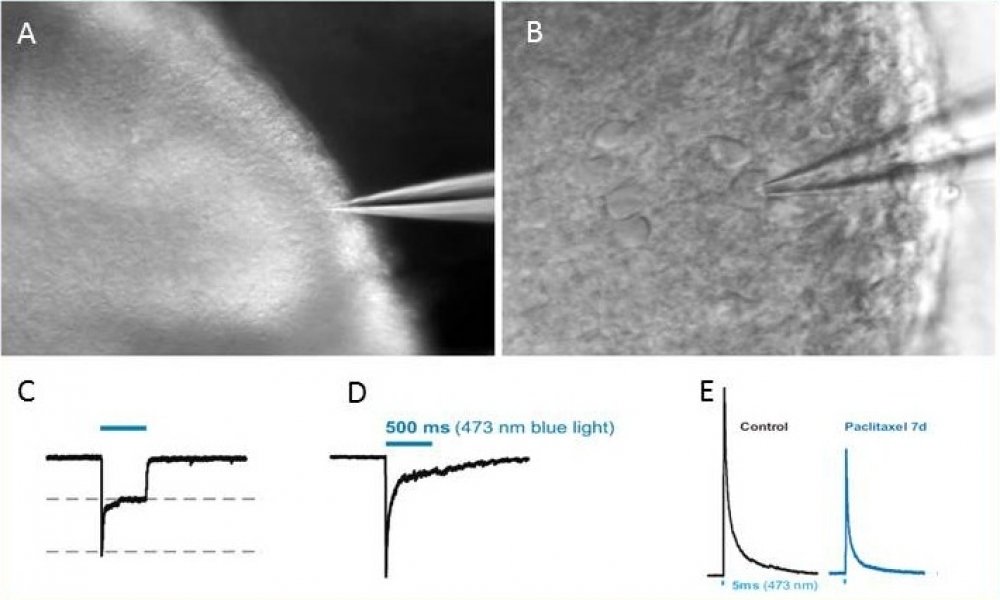Laboratory of Pain Research

Content of this page

Neuronal activity recorded in spinal cord (A) by patch-clamp (B). Optical stimulation of neurons with chanelorhodopsin (C) evokes inhibitory currents in excitatory neurons (D) that are reduced under pathological conditions (E) and contribute to pain.
About the Laboratory
The main research interest of our Laboratory is to study mechanisms of pain and to explore new possibilities of pain treatment, especially in chronic states. Our experimental work is concentrated on the modulation of nociceptive information at the spinal cord level that is the relay center between the periphery and the higher brain areas. Our goal is to study these modulatory mechanisms in order to improve therapy for pain conditions, such as allodynia, hyperalgesia, neuropathic and cancer related pain. Our focus is on the role of TRPV1, purinergic P2X receptors and inflammatory cytokines. In our research we use mainly electrophysiological, optogenetic, immunohistochemical and behavioral methods.
The cellular and molecular neuroendocrinology group, led by Dr. Zemkova, is studying the relationship between the structure and function of P2X receptor channels and their role in electrical activity, calcium signaling, neurotransmitter and hormone release in neuroendocrine cells.
Publications
Rupert; Marian - Bhattacharya; Anirban - Sivčev; Sonja - Knězů; Michal - Cimická; Jana - Zemková; Hana Identification of residues in the first transmembrane domain of the P2X7 that regulates receptor trafficking; sensitization; and dye uptake function. Journal of Neurochemistry. 2023; 165(6); 874-891.
IF = 4.2
Špicarová; Diana - Nerandžič; Vladimír - Mužík; David - Pontearso; Monica - Bhattacharya; Anirban - Nagy; I. - Paleček; Jiří Inhibition of synaptic transmission by anandamide precursor 20:4-NAPE is mediated by TRPV1 receptors under inflammatory conditions. Frontiers in Molecular Neuroscience. 2023; 16(22 June)); 1188503.
IF = 3.5



















